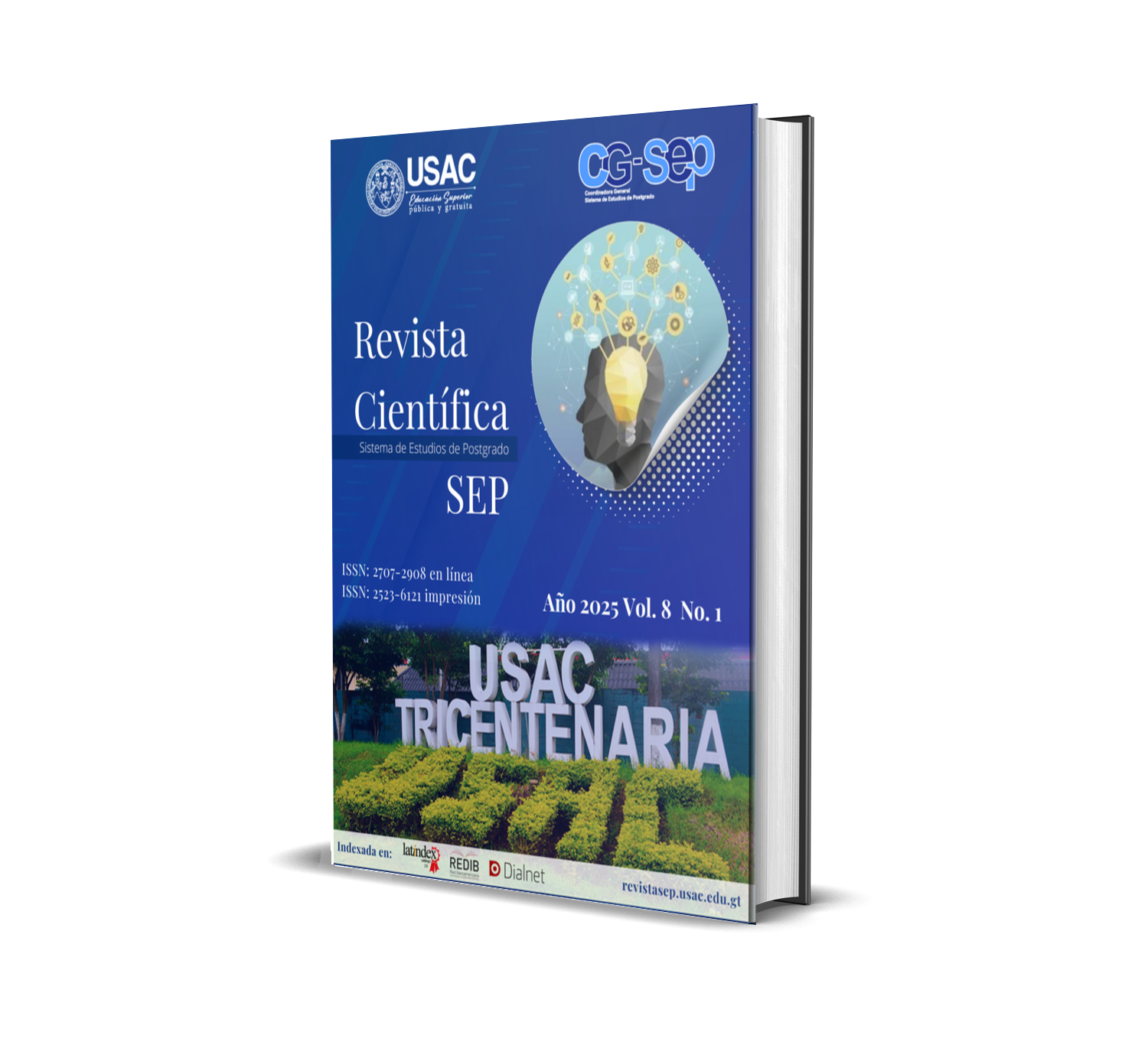Correlation between Anti-Müllerian Hormone and Antral Follicle Count as Markers of Ovarian Reserve in Women of Reproductive Age
DOI:
https://doi.org/10.36958/sep.v8i1.324Keywords:
hormona antimülleriana, folículos antrales, reserva ováricaAbstract
OBJECTIVE: to analyze the relationship between serum anti-Müllerian hormone (AMH) levels and antral follicle count (AFC) as complementary indicators of ovarian reserve in fertile women treated at Pedro de Bethancourt Hospital during 2023. METHOD: this cross-sectional descriptive correlational study included 95 women aged 18 to 35 years with regular menstrual cycles, both ovaries present, and no history of chemotherapy, radiotherapy, or prior ovarian surgeries. Serum AMH levels were measured, and transvaginal ultrasound was performed between days 1 and 3 of the menstrual cycle to count antral follicles. For the purpose of this study, AMH was classified as low (<1.37 ng/ml) or normal (≥1.38 ng/ml). AFC was categorized as normal ovarian reserve (≥10 follicles) or high ovarian reserve (>11 follicles). Sensitivity, specificity, positive predictive value (PPV), negative predictive value (NPV), and Youden index were calculated. Spearman’s correlation coefficient (ρ) was used to evaluate the relationship between AMH levels and AFC. RESULTS: a moderate positive correlation was observed between AMH and AFC (r = 0.48, p < 0.01). The AMH presented sensitivity of 80%, an NPV of 81.2%. 83% of patients showed normal AMH with high AFC, which highlights the importance of their joint evaluation. CONCLUSION: in conclusion, AMH significantly correlates with antral follicle count. Its high sensitivity and NPV support its utility as a screening tool for ovarian reserve assessment, particularly when used in conjunction with ultrasound.
Downloads
References
Abbara, A., Eng, P. C., Phylactou, M., Clarke, S. A., Hunjan, T., Roberts, R., Vimalesvaran, S., Christopoulos, G., Islam, R., Purugganan, K., Comninos, A. N., Trew, G. H., Salim, R., Hramyka, A., Owens, L., Kelsey, T., & Dhillo, W. S. (2019). Anti-Müllerian hormone (AMH) in the Diagnosis of Menstrual Disturbance Due to Polycystic Ovarian Syndrome. Frontiers in endocrinology, 10, 656. https://doi.org/10.3389/fendo.2019.00656 DOI: https://doi.org/10.3389/fendo.2019.00656
Bachar, G., Gutzeit, O., Nebenzahl, S. K., Weiner, Z., Beloosesky, R. y Fainaru, O. (2023). P-605 Hypoxia leads to diminished ovarian reserve in an age dependent manner. Human Reproduction, 2023; 38(1). https://doi.org/10.1093/humrep/dead093.934 DOI: https://doi.org/10.1093/humrep/dead093.934
Das, S., Bhattacharya, N., Mahata, R., Ghosh, S., Bhar, A. y Srivastava, P. (2024). Correlation of Follicle-stimulating Hormone, Anti-Mullerian Hormone, and Antral Follicle Count with Age in Ovarian Reserve Testing. International Journal of Applied and Basic Medical Research,2024; 14(3):162-168. https://journals.lww.com/ijab/fulltext/2024/14030/correlation_of_follicle_stimulating_hormone,.4.aspx DOI: https://doi.org/10.4103/ijabmr.ijabmr_81_24
Diaz R, Miranda D, Oriolo L (2024). Infertilidad femenina: niveles de Hormona Antimulleriana (AMH). 2024. Poster de la Jornada Provincial de las Ciencias Básicas Biomédicas. file:///C:/Users/edvin/Downloads/118-354-1-PB.pdf
Islam, Y., Aboulghar, M. A., El-Din, A. A. y Abdel-Aziz, O. (2016). The value of different ovarian reserve tests in the prediction of ovarian response in patients with unexplained infertility. Middle East Fertility Society Journal, 2016; 21(2):69-74. https://doi.org/10.1016/j.mefs.2015.08.005 DOI: https://doi.org/10.1016/j.mefs.2015.08.005
Iliodromiti, S., Anderson, R. A., & Nelson, S. M. (2015). Technical and performance characteristics of anti-Müllerian hormone and antral follicle count as biomarkers of ovarian response. Human reproduction update, 21(6), 698–710. https://doi.org/10.1093/humupd/dmu062 DOI: https://doi.org/10.1093/humupd/dmu062
Mendoza-Celaya J. A., Kably-Ambe, A., Carballo-Mondragón, E., Roque-Sánchez, A. M. y Benítez-Castro, K. L. (2019) Correlación entre las concentraciones séricas de hormona antimülleriana y la edad de la mujer con la tasa de recuperación ovular y embarazo. Ginecol Obstet Mex, 2019;87(08), 535-542. https://www.medigraphic.com/cgi-bin/new/resumen.cgi?IDARTICULO=88487
Mwakila Asana, A., Mboloko Estimo, J., Ngoyi Kabengele, D., Likinda Ilondo, G., Mulinda Mughole, A., Mogwo Sendeke, P., Moangi Bapanzi, C., Bikuelo Bikuelo, C. y Mboloko Mata, J. (2024). Anti-Müllerian Hormone in the Prediction of Assisted Reproduction Results at the Poissy Hospital (France). Open Access Library Journal, 2024; 11:1-12. https://doi.org/10.4236/oalib.1111504 DOI: https://doi.org/10.4236/oalib.1111504
Radicioni, A. F., Anzuini, A., y Carlomagno, F. (2021). Ormone anti-mülleriano (AMH): funzione e livelli nell’uomo e nella donna. L'Endocrinologo. 2021; 22:20-3. https://doi.org/10.1007/s40619-021-00895-4 DOI: https://doi.org/10.1007/s40619-021-00895-4
Sociedad Española de Ginecología Obstetricia (2017). Estudios ultrasonográficos diagnósticos y de control de los ciclos en reproducción asistida. Madrid: SEGO. 2017; 60(4): 398-409. https://sego.es/documentos/progresos/v60-2017/n4/18_GAP_Estudios_ultrasonograficos_3008.pdf
Ulrich, N. D., & Marsh, E. E. (2019). Ovarian Reserve Testing: A Review of the Options, Their Applications, and Their Limitations. Clinical obstetrics and gynecology, 62(2), 228–237. https://doi.org/10.1097/GRF.0000000000000445 DOI: https://doi.org/10.1097/GRF.0000000000000445
Published
How to Cite
License
Copyright (c) 2025 Jhosselin Yaneth López Sagastume, Mario Fernando Meléndez Pineda, Rosa Julia Chiroy Muñoz

This work is licensed under a Creative Commons Attribution 4.0 International License.
The authors who publish in this journal accept the following conditions:
- The authors retain the copyright and assign to the journal the right of the first publication, with the work registered with the Creative Commons 4.0 attribution license, which allows third parties to use what is published as long as they mention the authorship of the work already the first publication in this magazine.
- Authors may make other independent and additional contractual agreements for the non-exclusive distribution of the version of the article published in this journal (eg, include it in an institutional repository or publish it in a book) provided that they clearly indicate that the work it was first published in this magazine.
- Authors are allowed and encouraged to share their work online (for example: in institutional repositories or personal web pages) before and during the manuscript submission process, as it can lead to productive exchanges, more and more quick citation of published work (see The Effect of Open Access).









